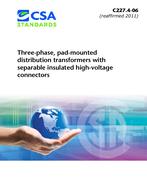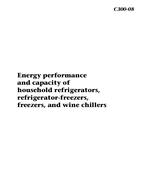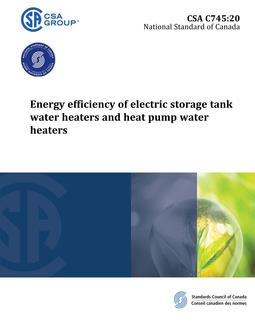Preface
This is the seventh edition of ANSI Z21.47 / CSA 2.3, Gas-fired central furnaces. It supersedes the previous editions published in 2012, 2006, 2003, 2001, 1998, and 1993.
Scope
1.1 This Standard applies to automatically operating gas-fired central furnaces (see Clause 3, Definitions), hereinafter referred to as furnaces, for installation in residential, commercial, and industrial structures including furnaces for direct vent, recreational vehicle, outdoor, and manufactured (mobile) homes. These furnaces may include a cooling unit. All units are to be constructed entirely of new, unused parts and materials. 1.2 In Canada, this Standard applies to gas-fired central furnaces having inputs up to and including 400,000 Btu/hr (117 228 W). 1.3 This Standard applies to Category I, Category II, Category III, and Category IV Central Furnaces. See Clause 3, Definitions. 1.4 This Standard applies to furnaces of the types defined in Clause 3, Definitions, which are designed to supply heated air through ducts to spaces remote from or adjacent to the furnace location. Location and use of such furnaces with respect to the spaces being heated necessitates automatic operation of the appliance. 1.5 This Standard covers the thermal efficiency, Clause 5.40, Thermal efficiency, and related markings of only those furnaces whose efficiencies are not regulated in the U.S.A. by the Energy Policy Act and Conservation Act of 1975 and the National Energy Conservation Policy of 1978* or not covered in Canada by Clause 13, Items unique to Canada, when connected to single phase electrical supply. * At the time of printing, Federal energy acts in the U.S.A. regulate the efficiency (heating capacity) of furnaces having input ratings less than 225,000 Btu/hr (65 941 W). 1.6 A furnace of a type not specifically defined in this Standard may be subjected to such examination and tests as deemed necessary by the testing agency to determine compliance with the intent of this Standard. 1.7 This Standard also applies to a furnace that is factory equipped with both a draft hood and an automatic vent damper device (see Clause 3, Definitions), hereinafter referred to as vent damper device. 1.8 Unless otherwise indicated on its rating plate, a furnace is to be for installation indoors in accordance with its markings and the manufacturer’s installation instructions. When specified additional or alternate provisions are met, a furnace may be for manufactured (mobile) home installation or for use outdoors. 1.9 A furnace for manufactured (mobile) home installation is to be designed so when installed in accordance with the manufacturer’s installation instructions supplied with the furnace, it provides complete separation of its combustion system from the living space of the manufactured (mobile) home. The complete separation of the furnace combustion system from the living space of the manufactured (mobile) home is accomplished by the furnace being designed and installed so (1) all air supplied for combustion, (2) the combustion system of the furnace, and (3) all products of combustion are completely isolated from the living space. Doors, panels, and any other access openings of the structure serving an enclosure required for such isolation are to communicate only to the outdoors. A furnace that by its inherent design provides such complete separation is referred to as a direct vent central furnace (see Clause 3, Definitions). 1.10 A furnace is for use with one or more of the gases specified in Clause 5.1.1. A furnace for manufactured (mobile) home installation is to be convertible for use with natural gas and propane gas. 1.11 Special construction provisions applicable to Category II, III, or IV furnaces are outlined under Clauses 1.12,4.1.25, 4.13, Condensate disposal, Clauses 4.14.16 through 4.14.18, 4.23.6(d), 4.23.6(h), 4.26.3 (b)(iv), and Clause 4.26.6(f). 1.12 A furnace for indoor installation designed to vent the flue gases horizontally through an outside wall is to be specified as Category III or IV, except Category I furnaces utilizing a listed mechanical venter applied externally to the venting system. 1.13 Special construction provisions applicable to a furnace for manufactured (mobile) home installation are outlined under Clauses 1.8, 1.9, 1.10, 4.1.24, 4.5.5, 4.10.18, 4.23.3(d), 4.23.9, 4.26.3(b)(vi), 4.26.13(a) and Clause 4.26.13(d), and Clause 6. 1.14 Special construction provisions applicable to a furnace convertible for use with natural gas and propane gas are outlined under Clauses 1.10, 4.7.5, 4.11.5(d), 4.26.3(b)(vii), and Clause 4.26.5(a). 1.15 If a value for measurement as given in this Standard is followed by an equivalent value in other units, the first stated value is to be regarded as the specification, except as noted in Clauses 4.22.1 and 4.26.1(b). 1.16 All references to “psi” throughout this Standard are to be considered gauge pressures, unless otherwise specified. 1.17 Special construction provisions applicable to a furnace designed for use with an optional listed conversion kit are outlined under Annex H, Provisions for listed gas appliances conversion kits (optional). 1.18 Clause 2, Reference publications, contains a list of standards specifically referenced in this Standard and sources from which they may be obtained. Clause 2, Reference publications, includes both U.S. and Canadian reference standards where applicable. It is the responsibility of the user of this Standard to determine which referenced standard applies based on the requirements of the authority having jurisdiction at the location of the installation. However, a furnace for use in a particular country only should comply with the applicable referenced standard for that country. 1.19 Clause 4.17, Electrical equipment and wiring, is unique to the Standard for Gas-Fired Central Furnaces, ANSI Z21.47. The Canadian electrical equipment and wiring provisions are contained in the Standard for Electrical Features of Fuel-Burning Equipment, CAN/CSA-C22.2, No. 3. 1.20 Special construction provisions applicable to furnaces designed to operate at altitudes over 2000 ft (610 m) are outlined in Annex K, Provisions for listed high altitude conversion kits (optional). 1.21 In this Standard, “shall” is used to express a requirement, i.e. a provision that the user is obliged to satisfy in order to comply with the Standard; “should” is used to express a recommendation or that which is advised but not required; and “may” is used to express an option or that which is permissible within the limits of the Standard. Notes accompanying clauses do not include requirements or alternative requirements; the purpose of a note accompanying a clause is to separate from the text explanatory or informative material. Notes to tables and figures are considered part of the table or figure and may be written as requirements. Annexes are designated normative (mandatory) or informative (non-mandatory) to define their application.
Product Details
- Edition:
- 7th
- Published:
- 11/01/2016
- ISBN(s):
- 9781488301216
- Number of Pages:
- 324
- File Size:
- 1 file , 4.6 MB
- Product Code(s):
- 2424023, 2424023, 2424023


